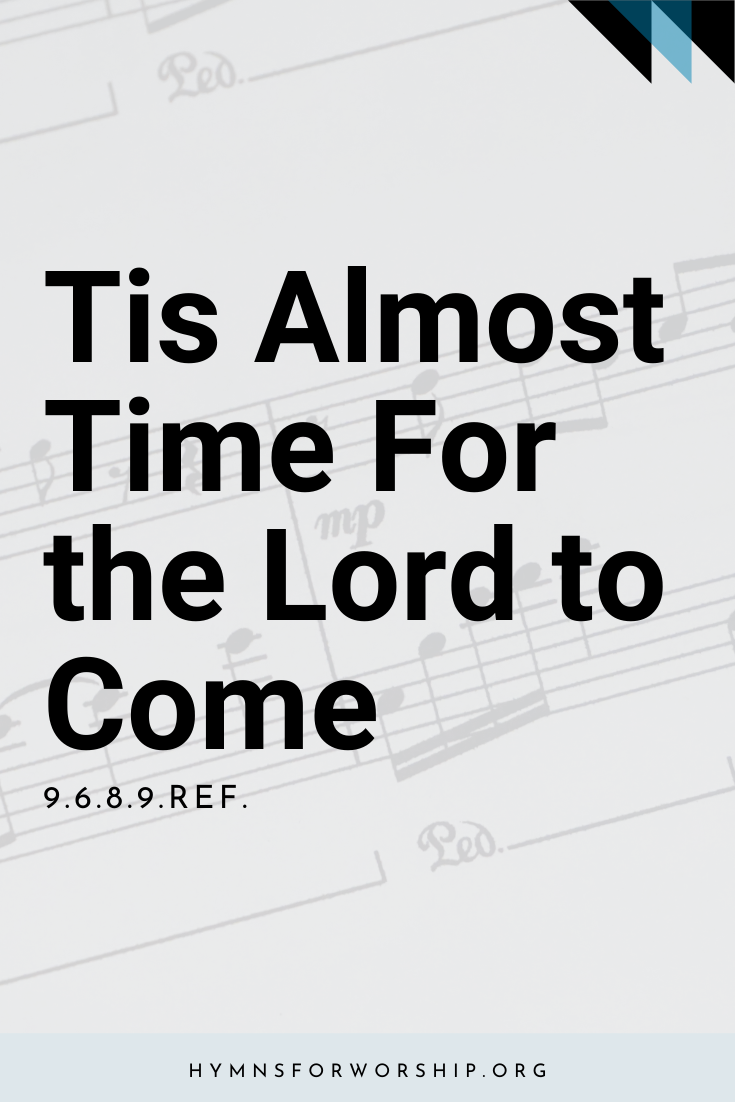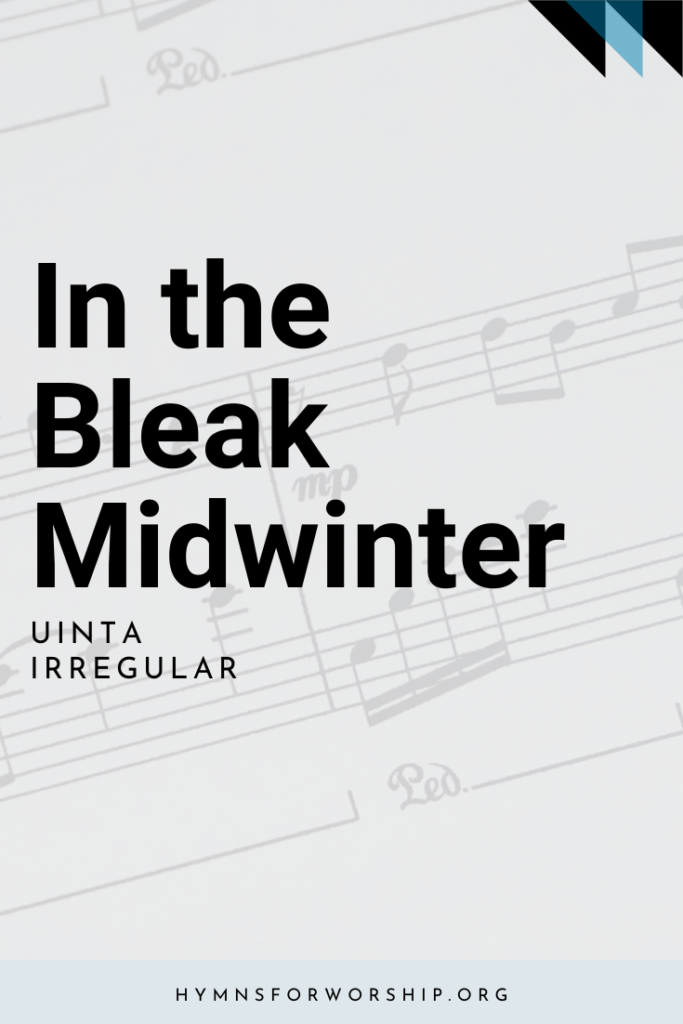JESUS CHRIST >> SECOND ADVENT
SDAH 212
‘Tis almost time for the Lord to come,
I hear the people say;
The stars of heaven are growing dim,
It must be the breaking of the day.
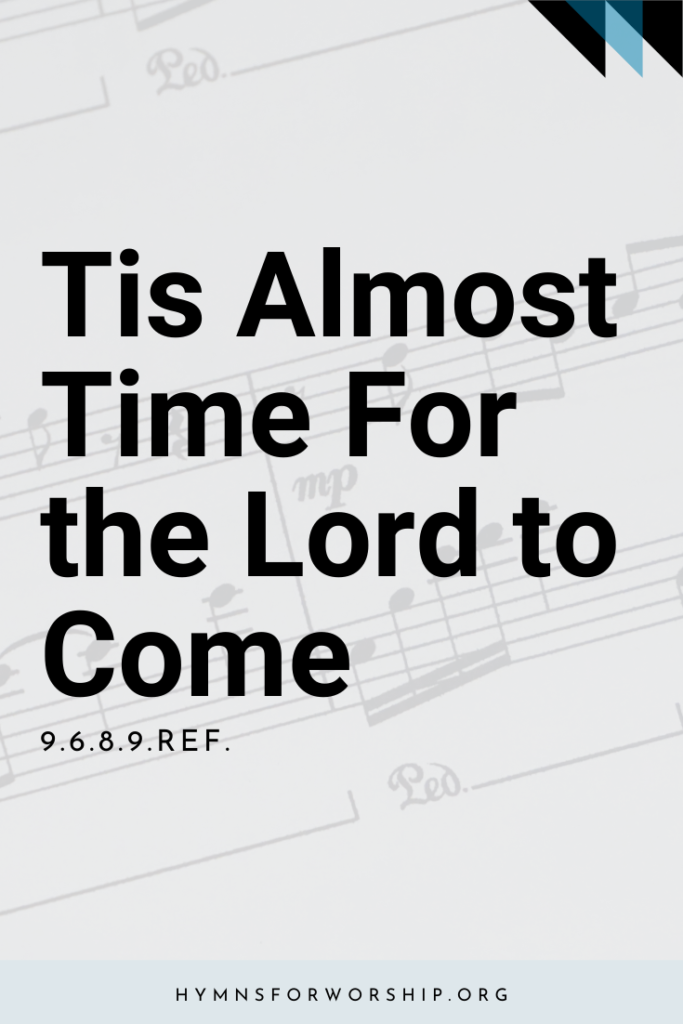

Text
1
’‘Tis almost time for the Lord to come,
I hear the people say;
The stars of heaven are growing dim,
It must be the breaking of the day.
Refrain
O it must be the breaking of the day!
O it must be the breaking of the day!
The night is almost gone,
The day is coming on;
O it must be the breaking of the day!
2
The signs foretold in the sun and moon,
In earth and sea and sky,
Aloud proclaim to all mankind,
The coming of the Master draweth nigh.
3
It must be time for the waiting church
To cast her pride away,
With girded loins and burning lamps,
To look for the breaking of the day.
4
Go quickly out in the streets and lanes
And in the broad highway,
And call the maimed, the halt, and blind,
To be ready for the breaking of the day.

Hymn Info
Biblical Reference
(b) Luke 21:25 (c) Matt 25:7 (d) Luke 14:21 (r) Gen 32:24
Author
G.W. Sederquist
Year Published
c. 1902
Metrical Number
9.6.8.9.Ref.
Composer
G.W. Sederquist
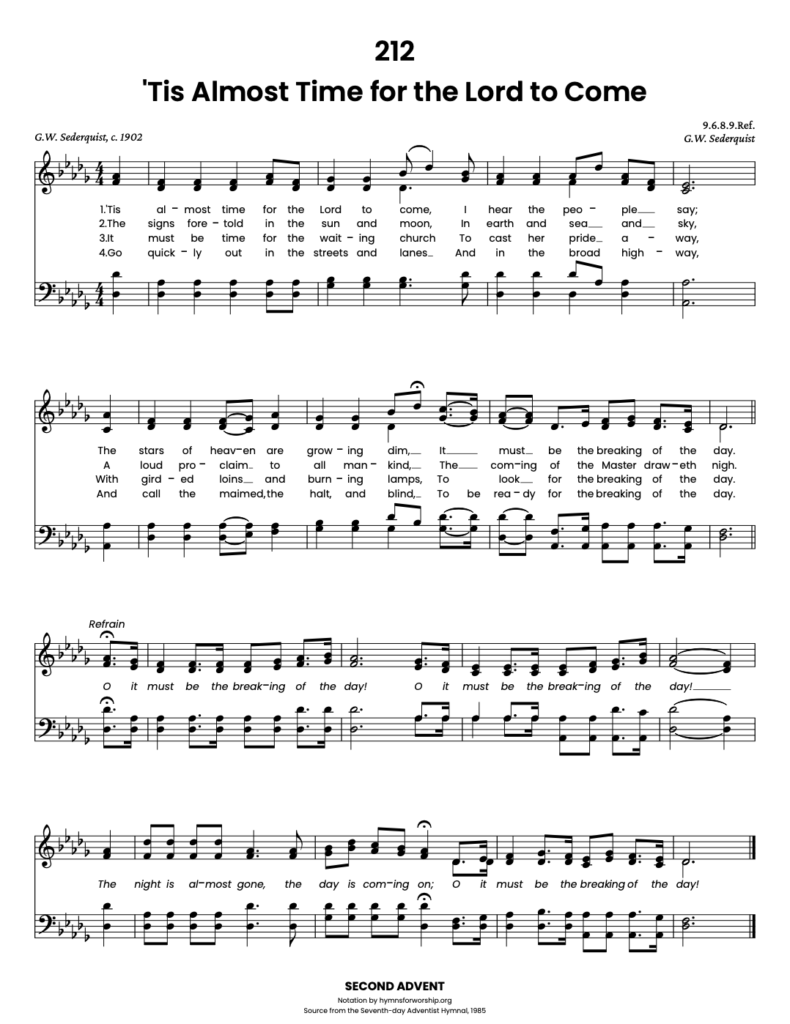
Get the hymn sheet in other keys here
Recommended Reading
George Washington Sederquist was born in Lower Granville, Nova Scotia on September 10, 1838. He was baptised into the Baptist faith when he was 25 years old, and was a member of this church for a few years.
At 33 years old, Sederquist moved to the United States and set up his home in Lynn, Massachusetts. It was here that he heard about the messages of premillenialism. Finally in 1902, he accepted the Adventist faith, that is the Sunday-keeping Adventism.
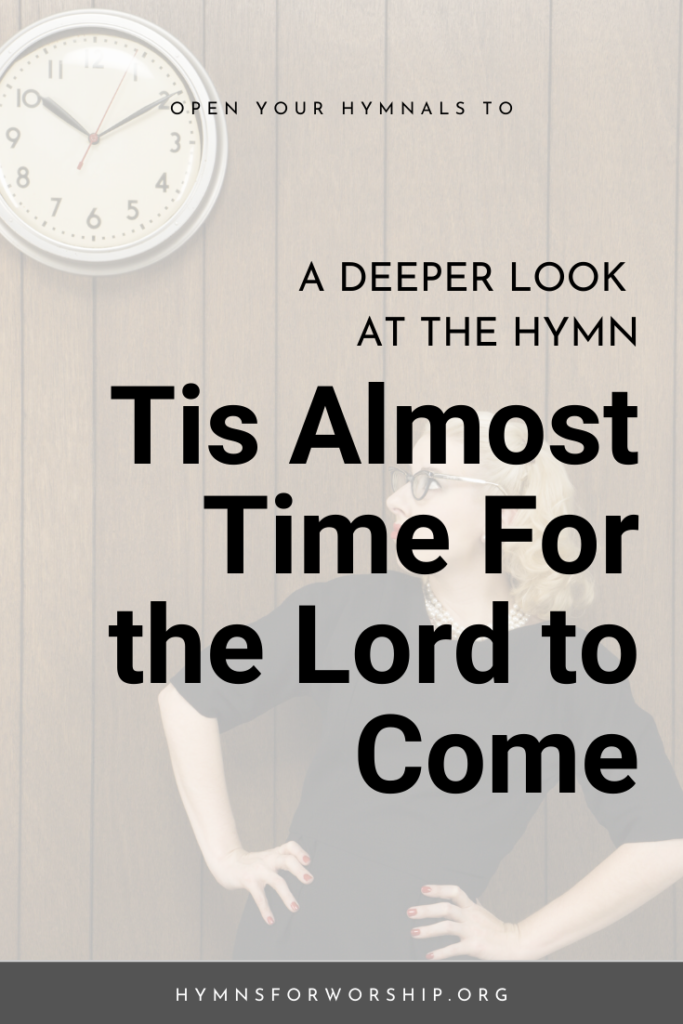
Notes
Make each hymn more meaningful with these helpful tools: Short, ready-to-use hymn introductions for church bulletins, multiple ways to introduce a hymn based on your worship theme and in-depth history and insights to enrich your song service.

